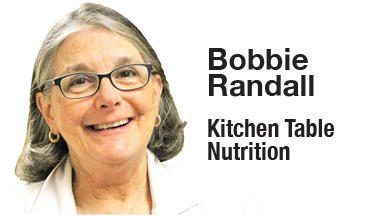A serving size is in the eye of the diner
- col-bobbie-randall
- April 11, 2024
- 642
One of the most popular questions people ask me is about serving sizes. The correct number of servings of specific types of foods depends on your age, sex and how active you are. But just how big do the nutrition experts say is a serving?
Beauty is in the eye of the beholder, and a serving size is in the eye of the diner. Just as beauty can vary according to who is doing the looking, a serving size can differ depending on who is doing the eating. But there’s where you can get into trouble.
Weight control can be boiled down to a combination of two issues. One of my favorite mantras is “serving size and exercise.” We all know what exercise involves; it means movement in any way, shape or form. The other side of that saying is serving size, often a delusional, self-determined entity.
Get out your measuring cup for this example. Pour out a half-cup of your favorite juice. Now that’s a serving. Many people drink much more than that.
Twice that amount, 1 cup or 8 ounces, is a serving of milk or water. Looking at fluids through a measuring cup gives drinking eight to 10 glasses of water a day a new perspective.
Starchy foods and vegetables are really going to surprise you. Just a half-cup of rice or pasta, potatoes, or peas is a serving. That’s the size of a half of a baseball or a small fist. How many servings of pasta does the average dinner plate hold? It depends on the size of the plate.
A serving of a meat or protein source is usually 3 ounces, cooked. That’s the size of a deck of cards or the palm of a woman’s hand. A baked potato serving is as big as a computer mouse or as small as a softball. A pancake or waffle compares with a 4-inch computer disc. An apple, orange and most fruits average the serving size of a baseball. Canned fruit and vegetable servings are only a half-cup. One half of a bun or bagel is a serving. Remember, anything bigger than these examples is another serving. This is where the servings and the calories add up.
The next time you go out to dinner, try to count the number of servings you receive. Restaurants like to serve more of the starches because it’s less expensive and they fill you up. By the way, those little dishes of applesauce or coleslaw are only 4 ounce, half-cup bowls.
Speaking of applesauce and coleslaw, it may not seem like much, but five to seven servings of fruits and vegetables every day can supply important vitamins, minerals and fiber with plenty of antioxidants to ward off cancer. If you don’t eat enough fruits and vegetables, consider taking a multivitamin.
Practice measuring serving sizes. Find a favorite plate or bowl that a half-cup of something fits into. Pour your juice into a small glass. Be careful with ice cream. A half-cup is a serving. Enough said.
Bobbie Randall is a registered, licensed dietitian. Email her at bobbierandallrd@gmail.com.

